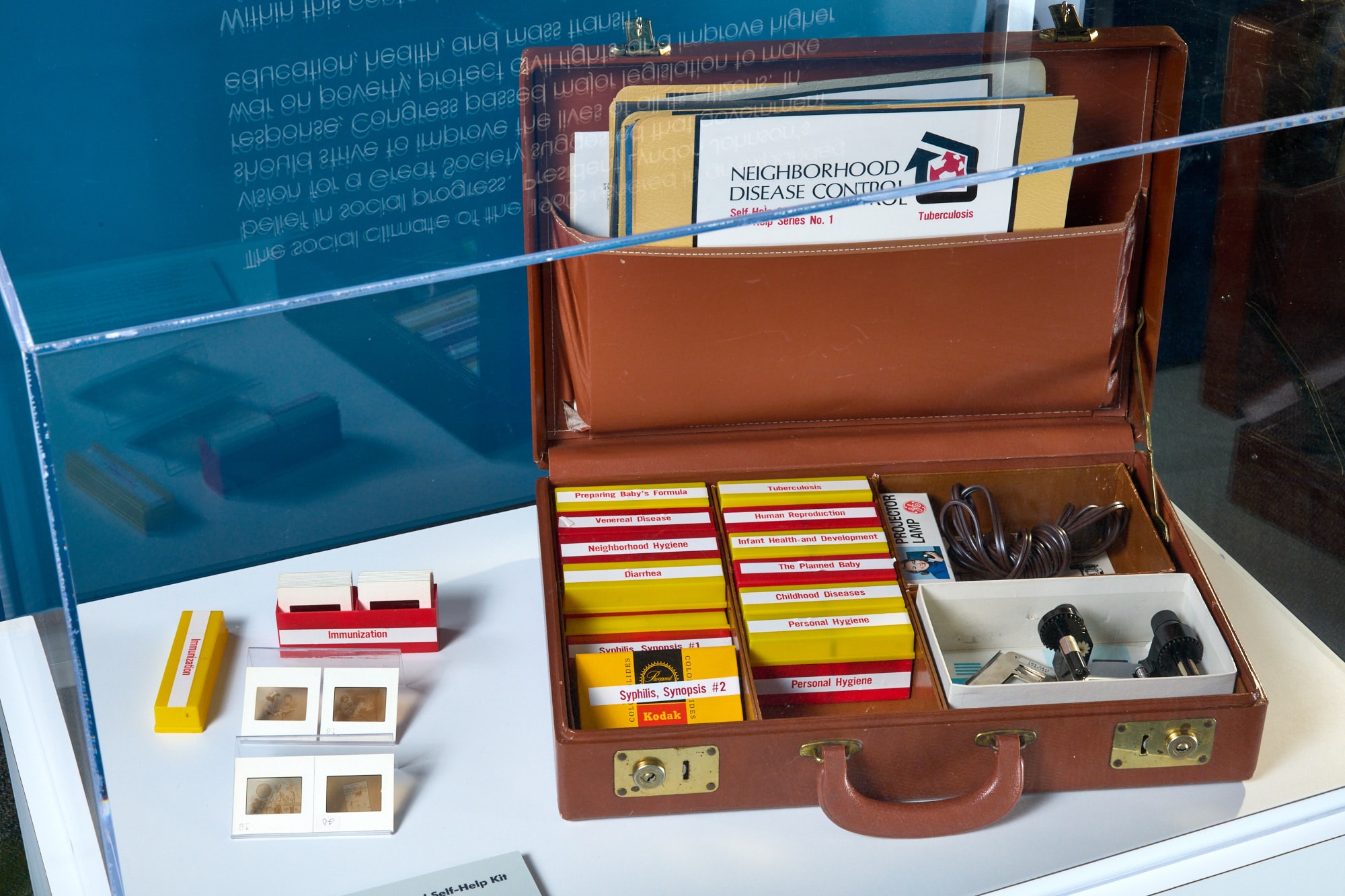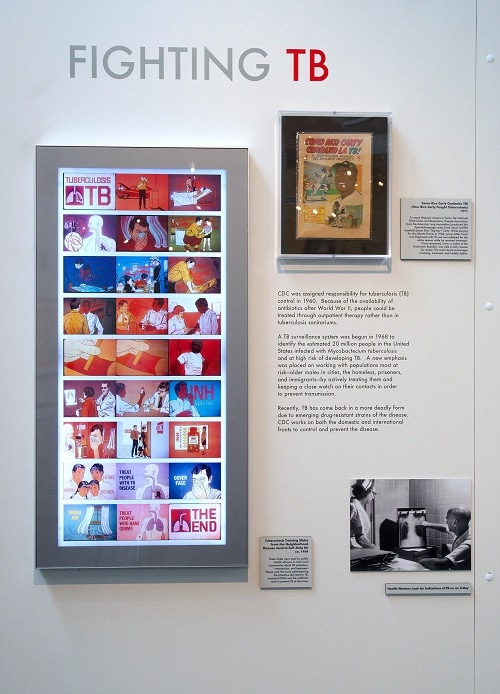Tuberculosis (TB)

Fighting TB
In the 1960s, another U.S. Public Health Service program transferred to CDC; this one focused on preventing tuberculosis (TB). TB is an infectious disease caused by a bacterium that spreads from person to person through airborne droplets. Historically, patients with TB were sent to sanitariums for treatment, but the availability of antibiotics after WWII meant patients could receive outpatient therapy instead. When the TB program transferred to CDC, Public Health Advisors actively monitored their assigned neighborhoods for high-risk groups, such as older men, immigrants, and people experiencing homelessness. If a case was identified, the patient was treated to prevent transmission to others, and Public Health Advisors would watch their contacts to prevent TB transmission.

Seen here are projector slides from the Neighborhood Disease Control Self-Help Kits used by the neighborhood Public Health Advisors to train local communities about TB. The slides feature a series of images showing how TB is spread, diagnosed, and then treated. In the images, a red mist, representing the TB bacteria, is shown spreading through the air and being inhaled by others as people have contact with one another. Next a person is given a skin test, then a chest x-ray, and begins taking antibiotics. Today, CDC continues its work against TB by monitoring for new cases, providing funding to state and local programs, and providing laboratory diagnostics.